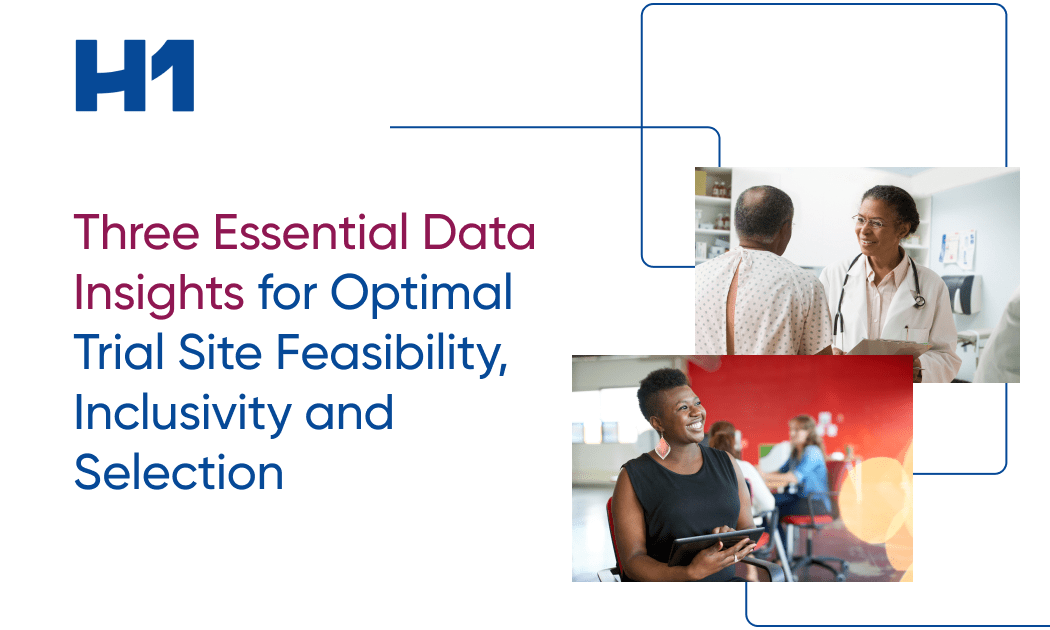How to Build a Scalable Patient Representation Strategy

How Trials Can Benefit from Data and Technology for Small and Big Companies
Put simply – in 2022, clinical trial diversity, equity and inclusion (DEI) was top of mind for the pharma and biotech industries, across all phases of drug and device development. It was even a key topic of conversation at some of the world’s largest congresses, such as ASCO, giving a glimmer of hope for oncology trials to reach and represent a wider and more inclusive population.
In addition, the US Congress passed legislation to provide funding for reforms in the Federal Drug Administration specific to Clinical Trial Diversity & Modernization. This amended the Federal Food, Drug and Cosmetic Act that encouraged drug and device sponsors to submit diversity action plans stating their goals for increasing enrollment in vulnerable and underrepresented populations.
This acted as a provision to the draft guidance released last year, “Diversity Plans to Improve Enrollment of Participants from Underrepresented Racial and Ethnic Populations in Clinical Trials.”
Critical barriers to inclusion in clinical trials are well known: mistrust in pharma; lack of awareness of the opportunities and benefits of participating in a trial; access to trial sites; logistical and resource constraints; lack of representation of minority populations at sites, networks, and with investigators; and low levels of engagement towards underrepresented communities in the current landscape of clinical trial networks.
The legislation expanded previous agency guidance on clinical trial representation and the characteristics required to be considered in a diversity plan.
As we enter a new year, what progress did we make and where do we still fall short?
Not everyone has the resources to reach underrepresented populations, so how much progress did we really make?
If we go back to the ASCO example and think about oncology, according to Clinical Trials Arena, among Phase III cancer trials completed in the last five years, most did not even reveal data on the race and ethnicity of their patient pools. In fact, less than half of the pharma-sponsored trials, and only one in 10 academic-sponsored trials, reported on the race and ethnicity of their enrolled patients.
The answer isn’t to hide the data, but instead to leverage the data and its insights.
Company Size and Resources Matter
In working with clients, what we often see is that larger pharma and biotech companies have more resources to approach trial diversity from a wide, tech-enabled lens. The same isn’t always true of smaller pharma and biotech companies. Nevertheless, they are trying with the resources available to them.
While many smaller companies have only limited resources, they can still make a commitment to DEI and incremental changes while the larger pharma companies’ efforts, funding and needle-moving can make progress on effort and accountability.
While many aspects of DEI may require increased resourcing, making such DEI commitments are an opportunity for small companies to make quick, visible progress and signal priorities to the market.
Historically, the patient populations most likely to require the use of new treatments are unequally represented in many clinical trials upon their approval. There is an enrollment shortage of people from diverse groups, defined by factors such as: race, ethnicity, sex, gender identity, age, socioeconomic status, disability, pregnancy status, lactation status, and comorbidity. The lack of diversity in trial participation has created gaps in the understanding of treatment safety and effectiveness across the different populations receiving the treatment upon launch.
Drowning in Data
Knowing that about 30 percent of the world’s data volume is generated by the healthcare industry, it seems odd as to why we don’t have better ways to exchange it, share and surface the much-needed data insights that could help reduce this incredibly high cost and burden in clinical research. There clearly is a disconnect on bringing the right data to the people who need it and the cost of doing nothing is much higher compared to taking action.
Before we can start to think about reducing this effort and the impact on patient representation, there are a few additional challenges to consider:
- The global healthcare data and analytics market are opaque and highly fragmented.
- Culling, curating, and pulling constantly-changing data together can take months, if not years.
- Data regarding the efficacy and availability of new treatments is siloed.
- Information highlighting physician and patient demographics is limited.
Working with HCPs and sites where diverse patient populations feel safe and understood provides a significantly higher likelihood to recruit and retain diverse patient populations in clinical studies.
It becomes critical to collaborate with HCPs and sites based on these diversity metrics in order to make smart and data-driven decisions.
So which data elements can drive change? Include underrepresented patient populations in clinical studies by understanding where these patient populations are located, which HCPs are treating the target patient populations and who might be able to connect best with these patient groups to enable awareness and confidence in the treatment and clinical trials.
A Future of Tech-Enabled Trials
From straightforward software applications, managing data collection for complex systems, and integrating nearly all elements of a trial, technology has the potential to improve almost every aspect of clinical trials.
CROs and trial sponsors are already using data and technology to address long-standing challenges like patient recruitment and retention, as well as data security. Technology also enables the industry to adopt decentralized clinical trial models and remote patient care.
Cloud-based systems and artificial intelligence are streamlining data collection and can greatly reduce time spent on data analysis, resulting in shorter trials and benefitting both sponsors and patients. Similarly, wearable devices and telemedicine offer safe at-home solutions which reduce site visits, resulting in easier methods of recruiting and retaining trial participants.
While the focus tends to be on technologies to improve the clinical and research phases of trial design, innovations to ease the burdens of participation for patients and caregivers could be equally beneficial to trial outcomes. Just as sponsors use technology to find and recruit patients, patient service providers can integrate technology to improve patient experiences.
Technology developed within a patient-centric mindset is critical for adoption success. Not only is every trial unique, but so is every patient. The most effective approaches to technology are at least flexible, if not customizable. They must account for elements such as location, the severity of patient health, patient comfort with technology, local regulations, and privacy. Successfully addressing patient needs with technology has the added benefit of freeing up trial staff, allowing them to focus more time on data collection and crucial trial endpoints.
To reach these populations, specifically for successful clinical trials, requires building trust between patients and doctors in vulnerable communities.
Both the public and private sectors have already initiated efforts to address clinical trial diversity. The need for increased efficiency and diversity are factors added to the trial success metrics. With efficiency and performance requiring an historic view, diversity and its influence require a view into the future. Despite recent efforts, it remains a challenge.
Keys to A Scalable Diversity Strategy: How the Data & Tech Can Benefit Us All
Identify sites with high capacity to enroll underrepresented patient groups.
- Build more inclusion into the inclusion/exclusion parameters
- Assess indication-specific patient-level race & ethnicity data.
- Keep up-to-date with the latest trials from competition or partners.
- Understand how a group of clinical trial sites performed in the past on similar trials.
- Define a balance between patient access, experience and past clinical performance metrics to select your Sites and PIs
Ready to get started? Talk to one of our experts today.
